Recreating the Country blog |
The vegetation of the Barrabool Hills part 4. Plant species – ‘Drooping Sheoaks adorned the Hills’13/11/2017  A community of Drooping Sheoaks, Allocasuarina verticillata A community of Drooping Sheoaks, Allocasuarina verticillata Before the first white settlers began clearing trees and shrubs around Geelong, Drooping Sheoak, Allocasuarina verticillata was a widespread and distinctive feature of the Barrabool Hills and the Geelong region. Drooping Sheoaks were the first tree that Surveyor John Helder Wedge recorded in his diary in 1835 as he crossed the Barrabool HIlls near Pollocksford. Artists Charles Norton> painted a landscape of grasslands and Drooping Sheoaks near Ceres in the Barrabool Hills in 1846 and Eugene von Guerard> sketched the harvesting of Drooping Sheoak on the banks of the Barwon River in 1854. These early records suggest that a significant part of the Barrabool Hills landscape was open grasslands under scattered Drooping Sheoaks. 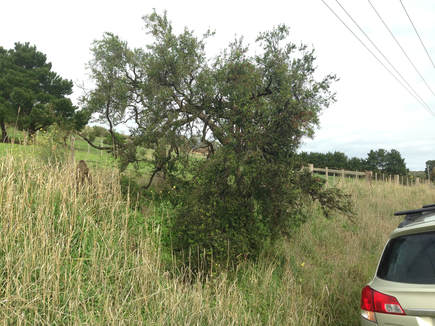 A solitary Sweet Bursaria surviving on Merrawarp Rd. This remarkable small tree would be several hundred years old. There are at least six remaining in the Hills. Pre 1835 they would have been numerous and widespread A solitary Sweet Bursaria surviving on Merrawarp Rd. This remarkable small tree would be several hundred years old. There are at least six remaining in the Hills. Pre 1835 they would have been numerous and widespread Recent surveys show a diverse vegetation. We know from recent vegetation recent studies (Remnant Roadside Vegetation of the Surf Coast Shire, 1997, Moulton P. Trengove M, Clark G>) and (Gordon TAFE, Conservation & Land Management students and teacher surveys, 2017, for Flora of 'The Hills' booklet - see below), that there is a diverse community of plant species remaining on roadsides and on private properties in the Barrabool Hills. These studies hint at the extraordinary diversity of the vegetation in the Barrabool Hills before 1836. 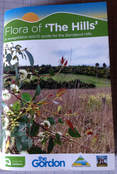 Click to the Flora of 'The Hills' booklet> for a comprehensive plant list and guide to the vegetation of the Barrabool Hills. (Launched on 27th October 2017 by the Barrabool Hills Landcare Group). Why was much of the pre-settlement landscape dominated by one species of tree? 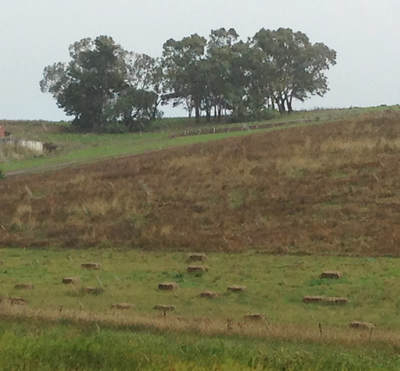 A remnant cops of trees just west of Merrawarp/Barrabool Rd corner. This same cops is shown on a pre 1900 B&W image. The trees are mostly River Red Gum and Lightwood. There are also Monterey Pine and Peppercorn Trees which are introduced species. A remnant cops of trees just west of Merrawarp/Barrabool Rd corner. This same cops is shown on a pre 1900 B&W image. The trees are mostly River Red Gum and Lightwood. There are also Monterey Pine and Peppercorn Trees which are introduced species. The pioneer plants weren't spreading. This prospect is particularly unexpected when we consider that many of the remnant plants found in the Barrabool Hills today are pioneer species, able to spread naturally and quickly into an open grassy landscapes. Trees like Black Wattle, Blackwood, Lightwood, White Cypress Pine, Sweet Bursaria, Silver Banksia, River Red Gum and Manna Gum grow easily from seed dispersed by wind, water and animals. Yet in major areas of the Hills and in the Geelong district this didn’t happen, Drooping Sheoaks dominated. The other unexpected feature of these early woodlands of Drooping Sheoak is their wide spacing as described by Wedge; “Crossed the Barrabull Hills….for the first 3 miles are of the same description, grass rather light and thinly wooded with sheoak”. 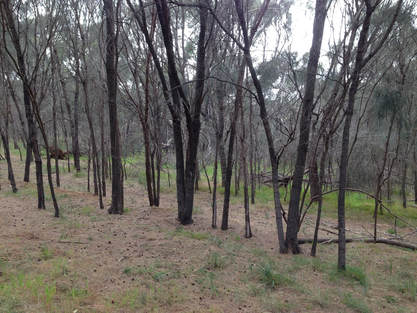 Drooping Sheoaks grow naturally as a thicket unless they are thinned by burning Drooping Sheoaks grow naturally as a thicket unless they are thinned by burning Wedge’s description and artists depictions are at odds with the natural habit of Drooping Sheoaks. Female Sheoaks produce cones with lots of fertile winged seeds. Most of these seeds will grow into a young trees where the wind blows them. The result is always a thicket of willowy young sheoaks growing just beyond the canopy of the mother tree. A thicket so dense that bush walkers have to find a way around rather than attempt to push through. The sheoaks were so thick on a roadside at Mt Duneed near Geelong in the early 1900’s, that a climber could scramble a whole block in the trees’ canopy without touching the ground (Graeme Anderson pers. com) 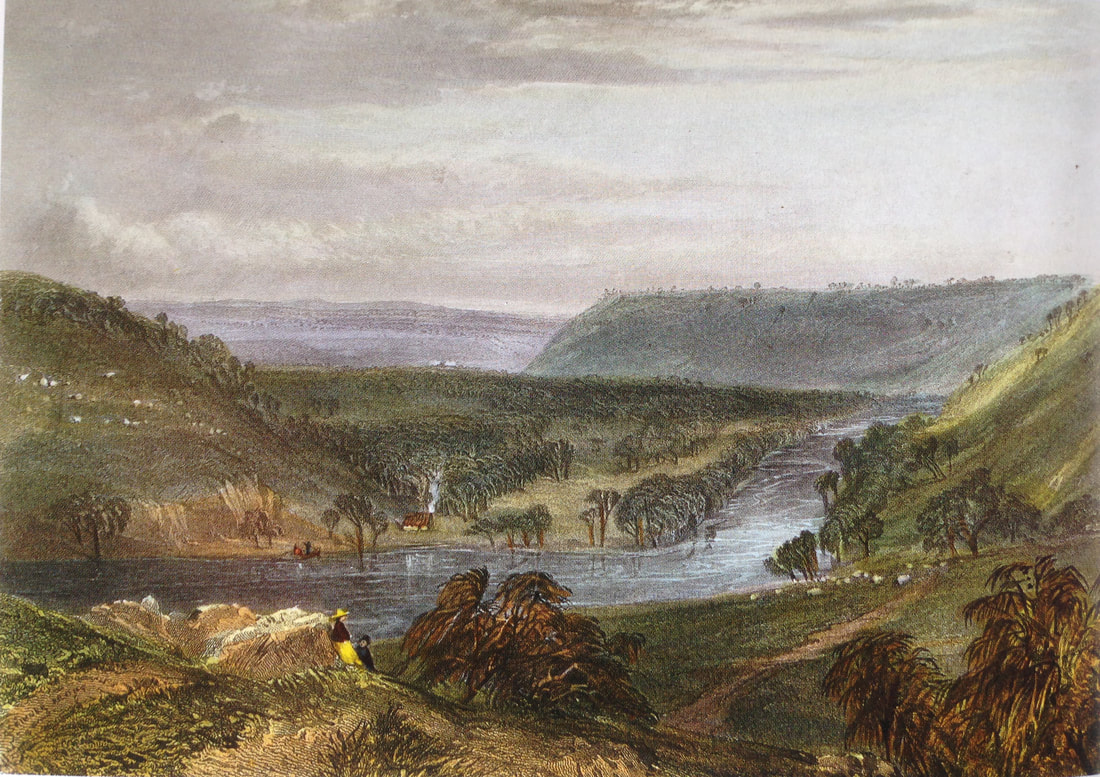 John Skinner Prout, The River Barwon, Victoria at Queens Park. 1847 John Skinner Prout, The River Barwon, Victoria at Queens Park. 1847 Drooping Sheoaks by design. Bill Gammage in his controversial tome ‘The Biggest Estate on Earth. How Aborigines made Australia’, argues that the Australian landscape was designed by the first Australians to make hunting game and gathering food convenient and efficient. In his view the landscape of pre 1835 was strategically shaped by burning. He describes a sophisticated process that encouraged desirable plants to grow in preferred locations. Gammage gives the example of an 1847 painting by John Skinner Prout, The River Barwon, Victoria at Queens Park. Prout shows a continuous line of trees on the river bank beside an open grassy strip that appears to be about 50 meters wide. Beyond the grassy strip is a woodland of scattered trees. Charles Norton’s 1846 painting from Ceres> looking toward Fyansford depicts the same pattern of vegetation on the Barwon River at this time. For a hunter concealed in the woodland, this is an ideal environment to spear a kangaroo as it moves across the open grassy strip from the river. It provides shelter and a fertile grassy meadow to attract grazing animals as well as hollowed trees for possums which were an important source of food and skins to make all weather cloaks, an essential item of clothing for the Wathaurong. Colonist Anne Drysdale described the same location in 1841, “This place is really beautiful. A short distance from the Barwon, which is a noble river: all so green and fresh, with trees of the finest kinds….scattered about and in clumps, like a Nobleman’s Park. The clumps are formed by burning of a large fallen tree, the ashes have the property of bringing up a clump of Wattles or gums”.  Starting a traditional owner cool burn Starting a traditional owner cool burn Gammage gives many more examples of fashioned landscapes, designed and shaped for a purpose. It is therefore likely that the dominance of sheoaks in the Barrabool Hills was the result of burning by the First Australians. The unnatural wide spacing seems also to have been part of a strategic design. Gammage outlines the burning strategy used to produce open woodlands of Drooping Sheoak at Cape Otway. My own observations over the past 25 years, which include burning Drooping Sheoak in the Teesdale Grassy Woodlands, 35 km west of Geelong, support Gammage's explanation. “Two hot fires within seven years eradicates Drooping Sheoak in the Cape Otway provenance. Seeds grow, but need 5-7 years to seed in turn and 10 – 12 years to seed well. Cool fire kills seedlings and spares mature trees but won’t provoke seed release. No fire lets seedlings become a dense whipstick forest.” If we accept Gammage’s well researched theory on indigenous land management as reasonable, then what purpose would an open grassy woodland of Drooping Sheoaks serve? What did the Barrabool Clan of the Wathaurong people, who occupied the Hills for more than 40,000 years, gain from creating open woodlands of Drooping Sheoak? 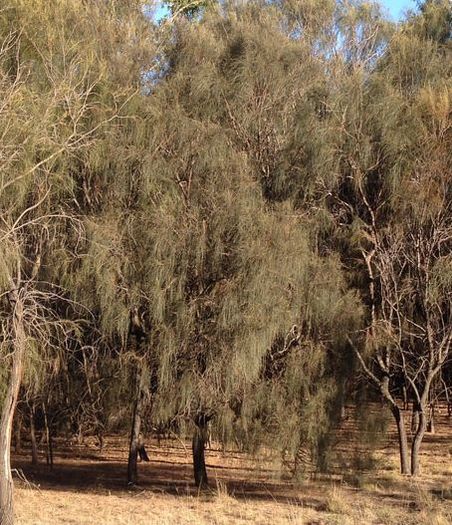 'Witjweri' is the mysterious haunting sound of a breeze blowing through sheoaks. 'Witjweri' is the mysterious haunting sound of a breeze blowing through sheoaks. Have you heard the Whit:ge:wherri? Helpful insights are provided by the Wathaurung word Whit:ge:wherri (pronounced witjweri). This word describes the unique sound of rushing, whistling or moaning made by a breeze through the foliage of sheoaks (PhD student Jennifer Dearnaley pers. Com. from Lou Lane’s investigations). The First Australians believed these sounds were the voices of their ancestor’s speaking to them. It’s a mysterious mournful sound that was very personal and deeply meaningful. Sheoaks provided a connection with the spirit world and it was common for Aboriginal burials to be near or even underneath Sheoaks. This connection with the voices of loved ancestors made Drooping Sheoaks very special trees that allowed the living to hear passed family members speaking to them. They could ask their advice and talk about personal matters (Nevill Bonney, 2016, 'Sheoaks, wind harps from the desert to the sea'). They were the mobile phones to heaven, an important link between the wisdom and knowledge of the past and the day to day challenges of the present. 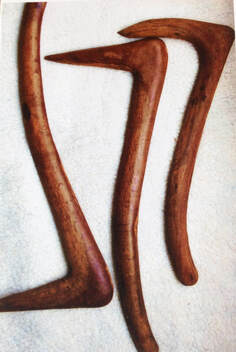 Hunting boomerangs made from Drooping Sheoak. Photo Neville Bonney Hunting boomerangs made from Drooping Sheoak. Photo Neville Bonney The Drooping Sheoaks provided many other benefits to the Barrabool Tribe. Practical and farming benefits:
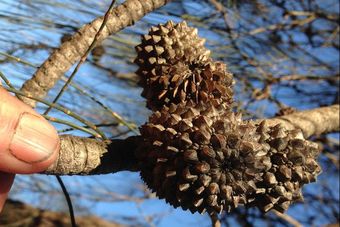 These Sheoak cones are too mature to eat, however each pointy valve contains a fertile winged seed. These Sheoak cones are too mature to eat, however each pointy valve contains a fertile winged seed. Food & medicine:
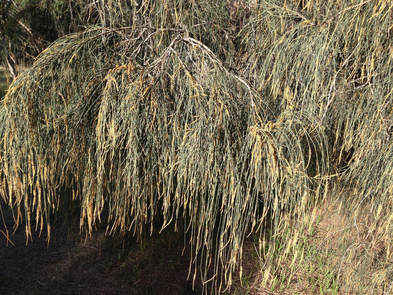 Narada or Ngarr:rai which mean hair are Wathaurong words for the Drooping Sheoak Narada or Ngarr:rai which mean hair are Wathaurong words for the Drooping Sheoak The Wathaurong words for sheoak were Narada or Ngarr:rai meaning hair tree (J. Dearnaley). This beautifully describes a most recognisable feature of the tree, but it doesn’t give any further insights into its cultural importance. Koort:Boork:Boork referred to stands or clumps of sheoak trees (J. Dearnaley) which suggests that sheoaks had enough familiarity and importance in Wathaurong culture to deserve a phrase for a sheoak community. The Drooping Sheoak was an important species for the Barrabool Clan and the broader Wathaurong people. The level of cultivation of this tree throughout Victoria suggests it was a culturally significant tree that was valued by all Traditional Owners. This research is presented respectfully and acknowledges the first Australians past and present. It is told in appreciation of the 2,000 generations of men, women and children who have walked these bush paths before us. For more reading on the vegetation of the Barrabool Hills;
Part 3 - Its original and natural condition in 1835, plant density> Part 2 - The arrival of Homo sapiens> Part 1 - From ancient rainforests> Also visit the Barrabool Hills Landcare's beautiful new website>
5 Comments
Steve
5/12/2017 08:00:47 am
Thanks Elissa,
Reply
25/6/2020 12:47:50 pm
Hi Steve,
Reply
Steve
26/6/2020 09:58:00 am
Hi Jess,
Reply
Lisa Jensen
25/6/2024 06:33:18 am
Interesting article that ties up some 'loose ends' that would have proved very helpful on my Toohey Forest, Upper Mt Gravatt surveying project Semester I, 2009 (Griffith University). Thank you for your research.
Reply
Leave a Reply. |
Click on the image below to discover 'Recreating the Country' the book.
Stephen Murphy is an author, an ecologist and a nurseryman. He has been a designer of natural landscapes for over 30 years. He loves the bush, supports Landcare and is a volunteer helping to conserve local reserves.
He continues to write about ecology, natural history and sustainable biorich landscape design. 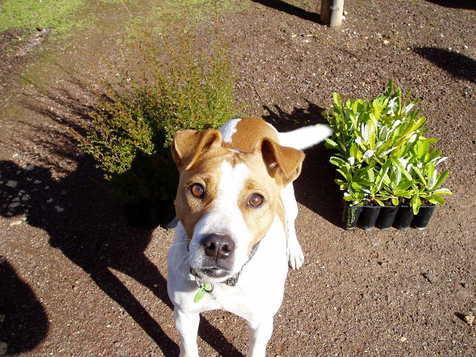
|
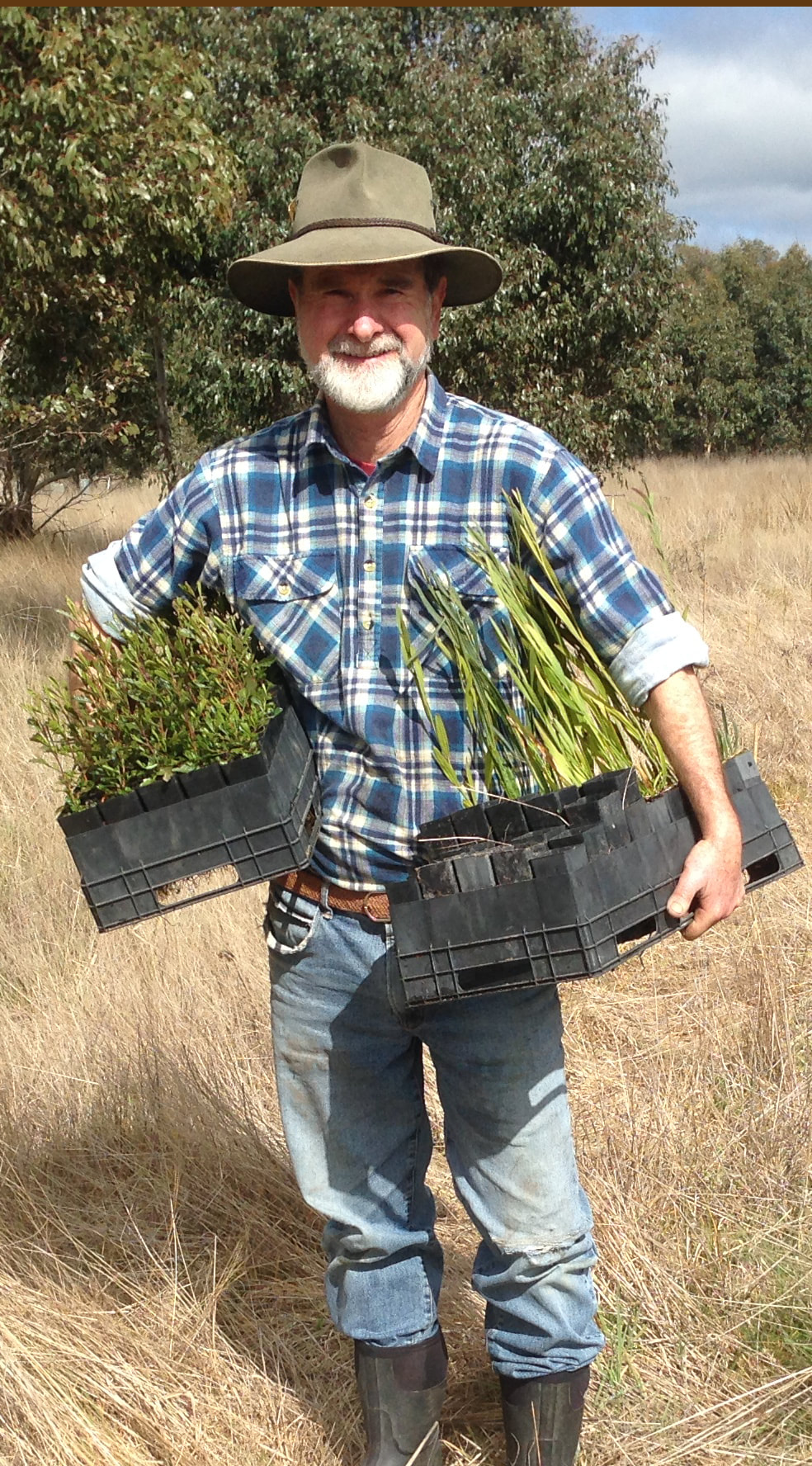

 RSS Feed
RSS Feed
